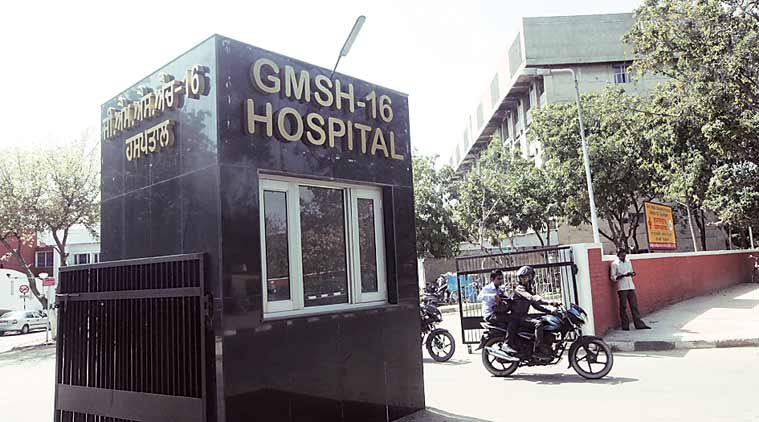 In dedicated COVID health care centres, GMCH-32 and GMSH-16 have 250 and 200 beds respectively with only 16 earmarked ventilators (10 at GMCH and six at GMSH).
In dedicated COVID health care centres, GMCH-32 and GMSH-16 have 250 and 200 beds respectively with only 16 earmarked ventilators (10 at GMCH and six at GMSH).(File Photo)
Planned city Chandigarh doesn’t have beds even for one per cent of its population in its Covid contingency plan. With cases increasing and that too from newer areas now, city’s COVID preparedness seems to have gone for a toss. So much so, all these two months and a half, the UT Administration conducted only 5,532 tests which form only 0.4 per cent of the population.
According to the details analysed by The Indian Express, the administration has arrangements only for 2,972 beds for its population of around 12 lakh to 15 lakh which forms about 0.24 per cent only (calculation as per 12 lakh).
For critical cases, there are just 41 dedicated ventilators in various hospitals of the city as per the report with the administration.
According to the detailed report of their preparation and testing with the administration, it was stated that they have earmarked 13 COVID care centers which have 2,172 beds.
Among the dedicated COVID hospitals, PGI’s Nehru Extension building has 200 beds with 15 earmarked ventilators. Sector 48 hospital has 100 beds with 10 earmarked ventilators.
In dedicated COVID health care centres, GMCH-32 and GMSH-16 have 250 and 200 beds respectively with only 16 earmarked ventilators (10 at GMCH and six at GMSH).
A Civil Hospital, ITBP, Behlana, has 50 beds with no earmarked ventilator at all.
The UT Administration said that beds at all these hospitals are “oxygen equipped”.
Chandigarh sees people from different states working here just as Gurgaon, a medi-city of Haryana. The way Gurgaon saw a surge in cases and its beds running out, a similar situation is not far away in Chandigarh.
LOW TESTING RATE UT
While the planned city boasts best infrastructure in the country, its COVID handling is open to question.
All these two months and a half, Chandigarh took only 5,532 samples which form just 0.2 per cent of the entire 12 lakh population. This was despite the city having a testing facility of 1,000 tests per day.
PGI has a testing facility of 500, GMCH 300 and IMTECH 200 a day. But the administration kept the testing really low.
While initially there were just cases pouring in from Bapu Dham Colony, now a cause for worry are the new cases being reported from different areas.
When Chandigarh saw cases spread in all areas, the administration decided to declare the whole city as red zone and go ahead with curfew and restrict movement of people. Later, theses cases remained restricted to specific belts like Bapu Dham or Sector 30, following which the entire containment tag was reviewed and only these pockets were made containment zones.
However, the situation is changing in the city as cases are being reported from different parts now and containment zones need to be reviewed.
GURGAON WITH ALMOST SIMILAR POPULATION
If we compare Chandigarh with a city planned on almost similar lines and resources and similar population with inflow from states, Gurgaon tested over three times more than what Chandigarh did.
According to the details, Gurgaon that has a population of over 15 lakh has seen samples of 17,800 (as of Tuesday night).
More than 400 samples are being sent for testing every day for the last one week and figures have crossed 600 as well on two occasions.
Gurgaon has reported about 2,329 cases till Tuesday night.
WHAT PUBLIC HEALTH EXPERT SAYS
Public health expert and secretary general for the Indian Association of Preventive and Social Medicine Dr A M Kadri maintains that contingency plan has to be prepared keeping the growth rate in mind and the projected rate in two months. He said even in testing, it is important to select samples carefully.
Dr Kadri said that in the testing being done “it is important whom you are selecting for testing”.
“Even in the testing, we have to see what is the positive rate and what is the subject we are choosing for testing,” Dr Kadri said.
He added, “Not just preparation of beds but I feel that we have to have close coordination among the medical institutions. Linkages have to be there among hospitals. I personally feel while making a contingency plan, the growth rate of the disease has to be seen and things be projected for next two months and accordingly planned.”